Dieffenbachia ‘Dumb Cane’ Houseplant Types And Plant Care Guidelines

HOUSEPLANTS > DIEFFENBACHIA

Elizabeth is a Permaculture Garden Designer, Sustainability Consultant and Professional Writer, working as an advocate for positive change. She graduated from the University of St. Andrews with an MA in English and Philosophy and obtained a Diploma in Applied Permaculture Design from the Permaculture Association.
Reviewed By ROY NICOL

Roy is a Professional Gardener and Horticultural Consultant, specialising in large garden year-round maintenance and garden development. He is an RHS Master of Horticulture and uses his research in the application of no-dig methods in ornamental garden settings. Roy has been a Professional Gardener for more than six years and is a member of the Chartered Institute of Horticulture, Professional Gardener's Guild and Association of Professional Landscapers (Professional Gardener).
DIEFFENBACHIA GUIDES
Dieffenbachia is a large genus of tropical plants, a handful of which are commonly grown as houseplants in temperate climate zones.
If you are looking for a particularly low-maintenance houseplant, then there are easier options to grow.
However, if you are looking to expand your collection of foliage plants to grow indoors, then dieffenbachia could offer some good options to consider.
These houseplants are prized for their large glossy leaves which provide plenty of visual interest even though the plants do not tend to flower in temperate climate cultivation.
Overview
| Botanical Name | Dieffenbachia |
| Common Name(s) | Dumb Cane / Leopard Lily |
| Plant Type | Houseplant |
| Native Area | Central & Southern America |
| Hardiness Rating | H1A |
| Foliage | Evergreen |
| Flowers | Rarely seen when grown in the UK as houseplants |
| When To Plant | All year round |
Sunlight
Preferred
Bright, Indirect Sunlight
Exposure
Sheltered
Size
Height
1 – 1.5M
Spread
0.5 – 1M
Soil
Preferred
Most fertile soils
Moisture
Moist but well-drained
pH
Any
Dieffenbachia species hale from the tropics of Central and South America, where they live in tropical rain forests.1Dumb cane. (2023, February 10). Encyclopedia Britannica. Retrieved March 14, 2023, from https://www.britannica.com/plant/dumb-cane

Since they naturally live in the dappled, sub-canopy shade, they can cope well with the somewhat lower light levels found inside our homes.
Common Varieties
There are many different species within this genus, but only a handful are typically commercially available for home growers.
Some commonly grown as houseplants and available for sale in the UK are:
D. amoena

D. maculata
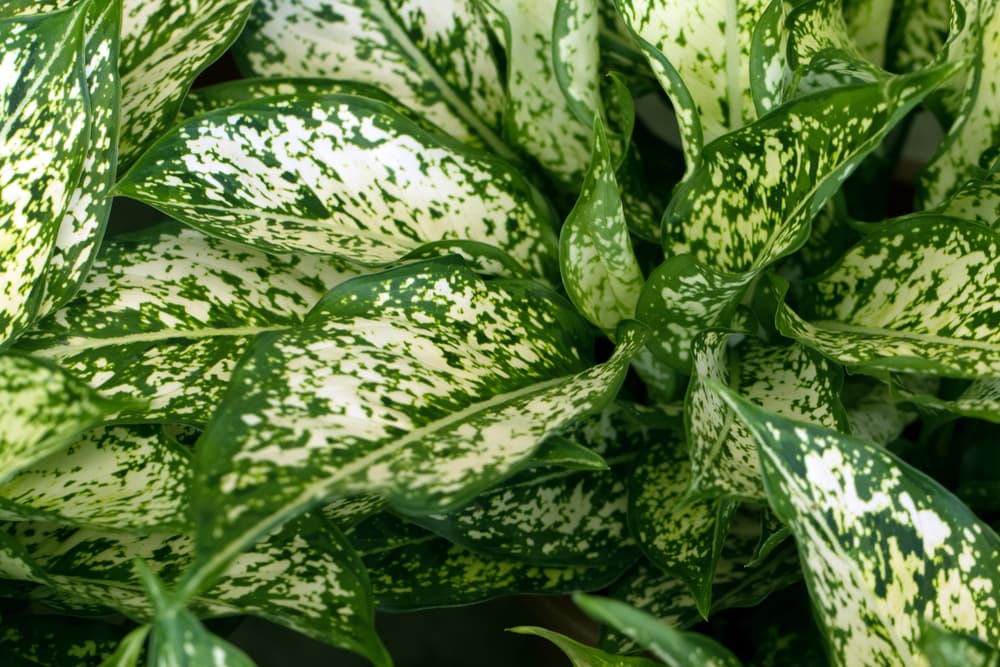
D. seguine ‘Camile’
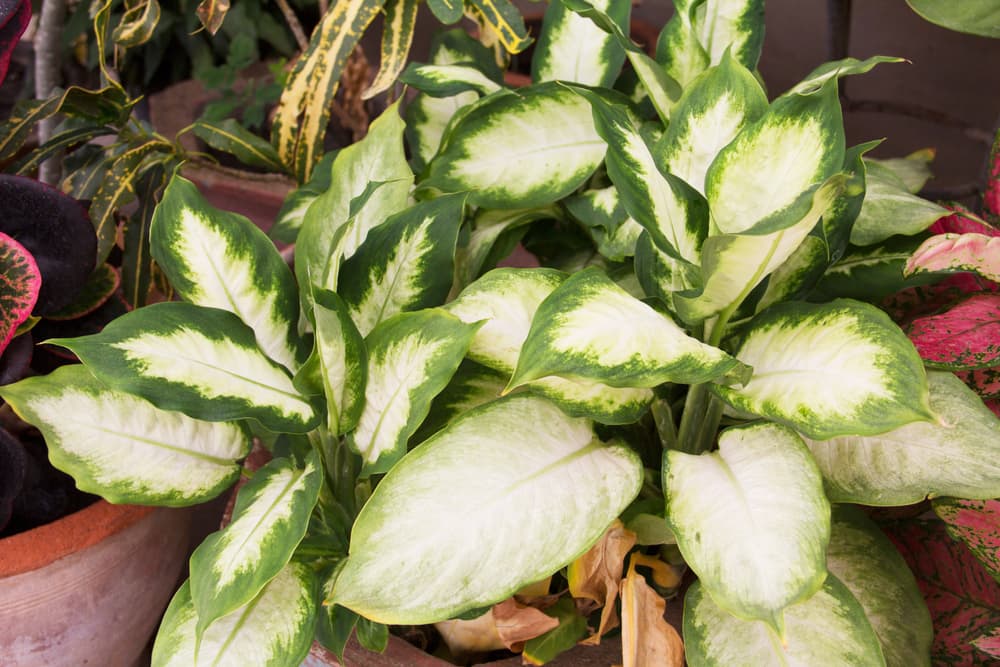
D. seguine ‘Reflector’

Dieffenbachia Plant Care
Dieffenbachias are not particularly challenging to grow indoors, but are a little fussy when it comes to the specific growing requirements.
Preferred Light
Dieffenbachia needs a spot with bright but indirect light.
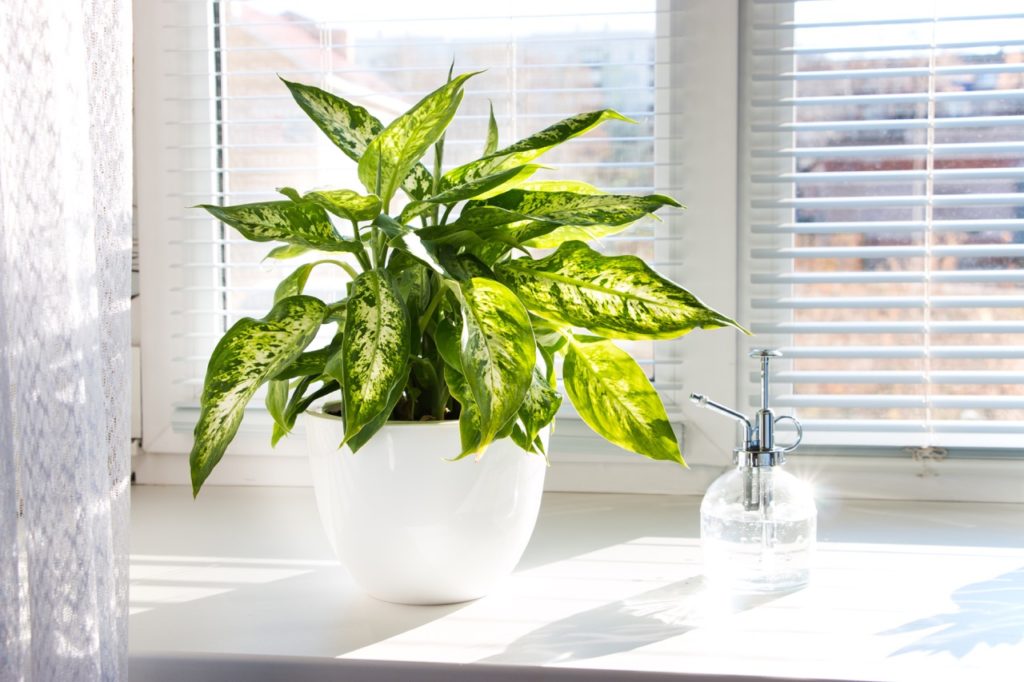
The direct hot sun can scorch the leaves and cause brown patches, but too little light can leave the foliage all washed out and plants may grow poorly.
Soil Requirements
Dieffenbachia should be potted up into containers that drain well and freely, filled with a peat-free loam or soil-based potting mix which is light and aerated.
Choose containers just a little larger than the rootball of the plant.
Watering
Between spring and autumn, water dieffenbachia whenever the top few centimetres of the potting mix feels dry.
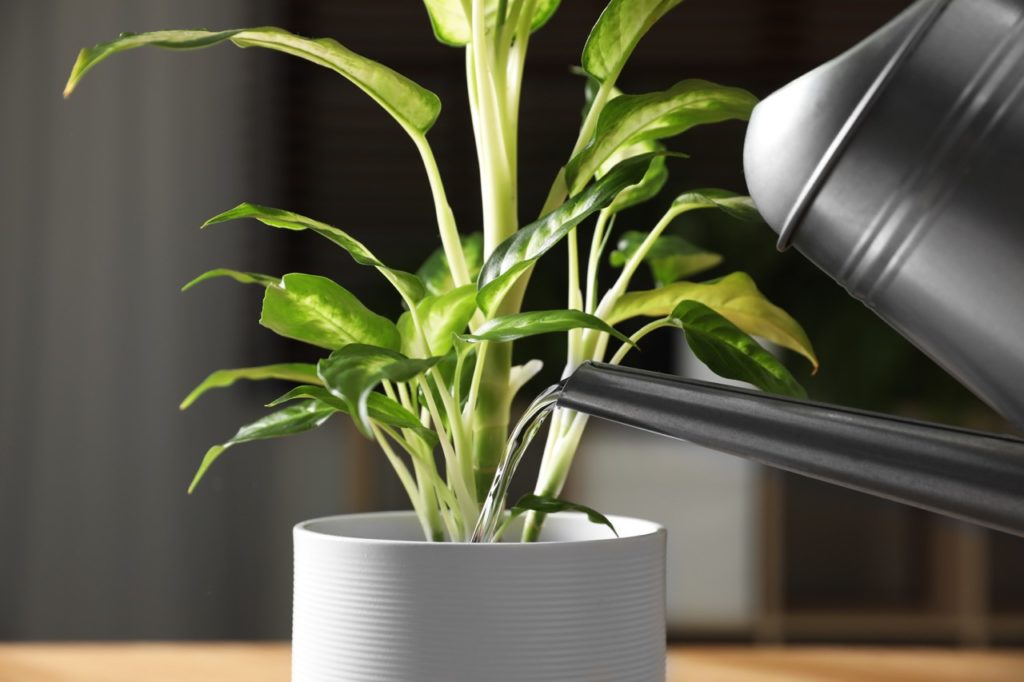
Make sure that any excess water can drain away freely.
In winter, water sparingly.
Temperature & Humidity
Dieffenbachia are tropical rainforest plants, meaning that they need warm and humid conditions to thrive.
Ideally, temperatures should be kept between 18-24°C at all times, and any draughts and extreme temperature fluctuations should be avoided.
Wipe the leaves with a damp cloth to keep them dust free and mist them a couple of times a week to maintain humidity.
Fertilising
Dieffenbachia will appreciate a balanced, organic liquid plant feed once a month over the spring and summer months.
Pruning
Other than removing the odd leaf that has become damaged or has yellowed, pruning is not generally required.
Potting & Repotting
Dieffenbachia should usually be repotted in spring every 2-3 years, or once the plant has become root bound within the previous pot.
Common Problems
The most common problems with dieffenbachias arise because the appropriate environmental conditions have not been provided or because there has been a mistake in the watering routine.
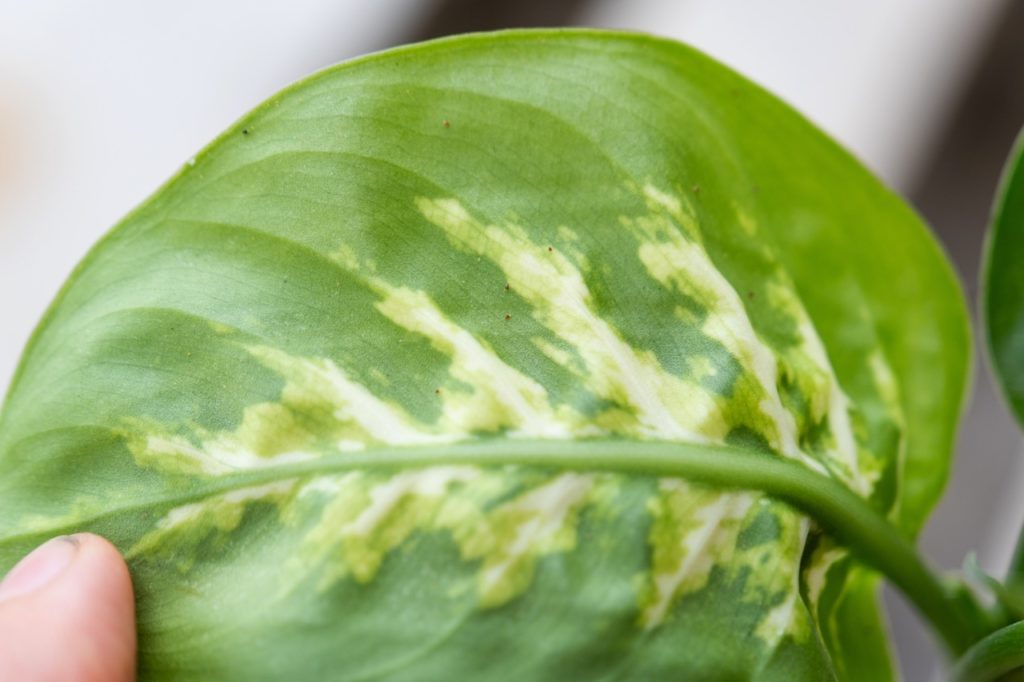
Like other houseplants, dieffenbachia can also commonly encounter issues with scale insects, spider mites or mealybugs.
Propagating
These plants can be propagated by means of division of mature plants.
Simply split the plant carefully, making sure that there are roots for each section and repot each division into its own pot.
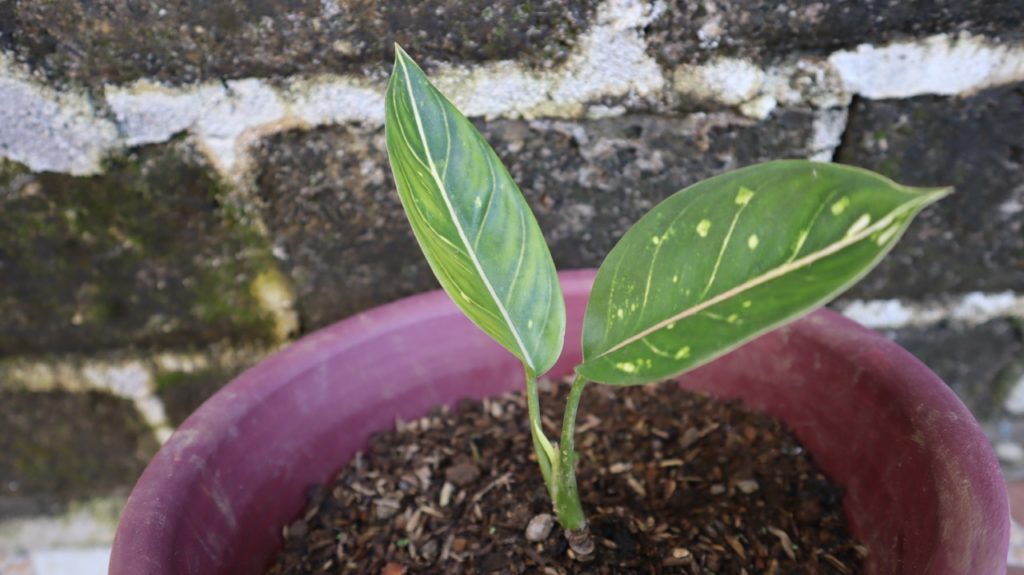
If you have a plant which has grown leggy and tall, you can also cut it down to the desired height.
The remaining portion will regrow from the point where it was cut and if you replant the top section that you cut off into a new pot, it should root and create a new plant.
References
- 1Dumb cane. (2023, February 10). Encyclopedia Britannica. Retrieved March 14, 2023, from https://www.britannica.com/plant/dumb-cane
